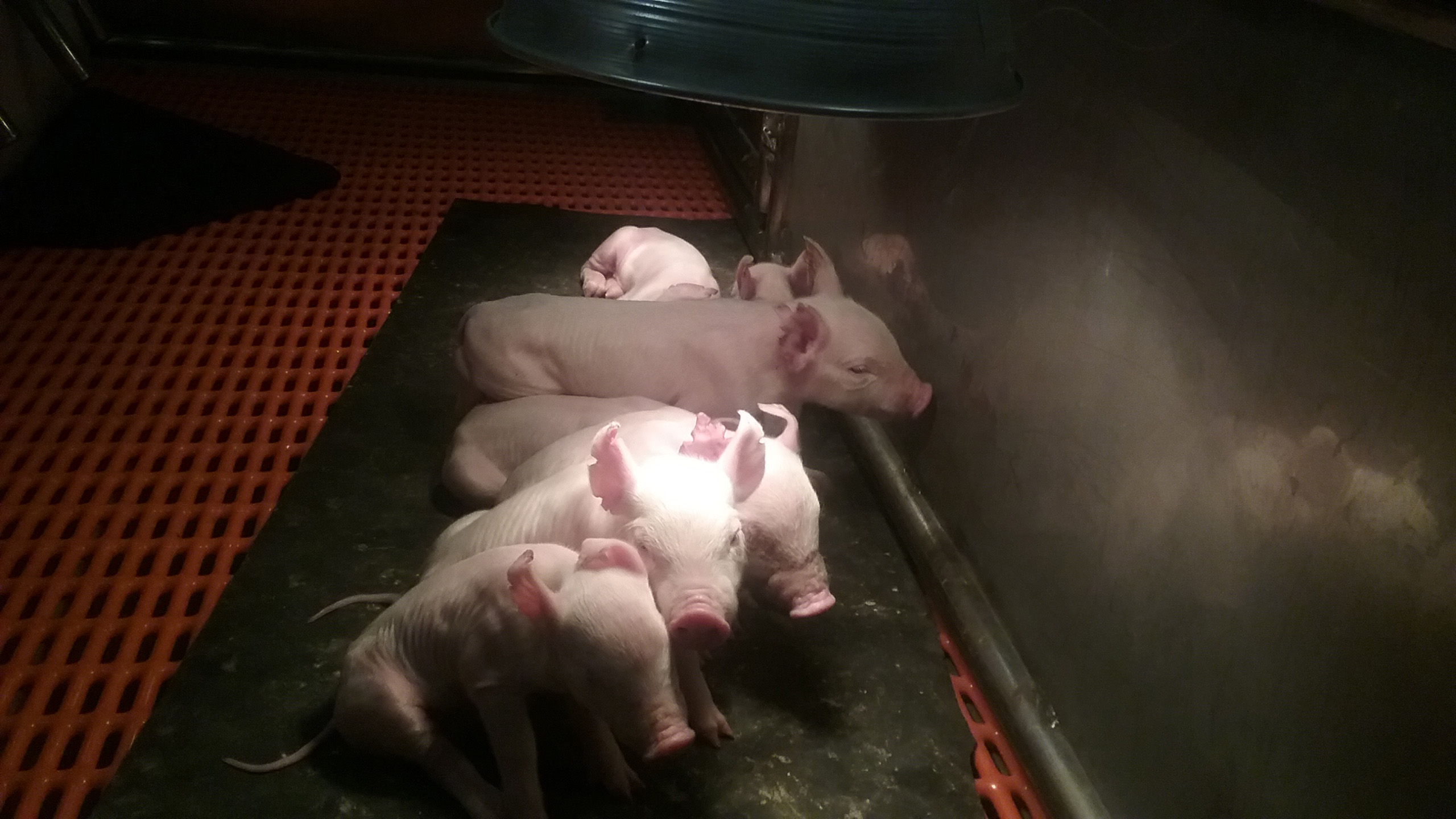Severe Combined Immunodeficient Pigs: A Promising Model for Human Stem Cell Therapy
Immunodeficient animals play an important role in biomedical research by allowing the examination of engrafted human cells under in vivo conditions, without risk of rejection. Researchers use these animals to study basic biology, model human diseases, and develop new therapies. Many fields have benefitted from this type of research, including stem cell biology, regenerative medicine, transplantation, infectious diseases, immunology, and cancer.
Severe combined immunodeficiency (SCID)—a lack or impaired development of the adaptive immune system—has been identified in humans, mice, dogs, horses, and most recently, pigs. In 2012, a research team led by Christopher Tuggle, Ph.D., and Jack Dekkers, Ph.D., from Iowa State University (ISU), in collaboration with Raymond Rowland, Ph. D., from Kansas State University, unexpectedly discovered naturally occurring SCID in pigs during a viral challenge study. Although SCID mice are used most often in research, the ISU team recognized the advantages of SCID pigs as an emerging model for cancer and regenerative medicine research because pigs are more similar to humans in size, physiology, and genetic makeup than mice.
Under a grant from the Office of Research Infrastructure Programs within the Division of Program Coordination, Planning, and Strategic Initiatives at the Office of the Director of the National Institutes of Health, Tuggle’s group is working to characterize pigs with naturally occurring SCID and create validated SCID models for use in preclinical testing of stem cell-based therapies. To maximize the broad use of these models, ISU developed protocols and worked with a vendor to design biocontainment facilities, or “bubbles,” to maintain the SCID pigs in a pathogen-free environment. Use of the bubbles significantly increases piglet survival and longevity. A specialized husbandry program has resulted in a specific pathogen-free SCID pig colony within the ISU facilities.

ISU researchers documented the SCID pigs’ phenotype, in which T cells and B cells of the adaptive immune system are lacking, but the natural killer cells of the innate immune system are functional. The researchers identified mutations in the Artemis gene, which is involved in DNA repair, as the cause of the SCID pig phenotype. The same phenotype exists in humans with Artemis mutations.
T cells help regulate the immune system and B cells produce antibodies. The lack of T and B cells allows growth of xenografts—cells inserted from another species. Several human cancers, including pancreatic carcinoma, melanoma, and ovarian cancer cells have been established in the SCID piglets but not in their non-SCID littermates. The ability of SCID pigs to allow growth of human cells creates a large animal model in which researchers can test therapies on human-specific pathogens, examine drugs to kill cancer cells growing in vivo, and investigate human stem-cell-derived therapeutics.
ISU has three main collaborators for their SCID pig research: Kansas State University, the University of Alabama, and Gift of Life, a federally designated organ and tissue recovery program. In addition, other organizations are using or planning to use these new pig models in their research. These include the following:
- Ohio State University (human pathogen testing)
- Mayo Clinic (cardiac stem cell repair)
- United States Department of Agriculture, Agricultural Research Service, National Animal Disease Center (innate and adaptive immune system interaction; immunity and microbiota interaction)
- Unit on Ocular and Stem Cell Translational Research at National Eye Institute, NIH (eye repair)
- Michigan State University (cancer)
- State University of New York Stoney Brook (skin grafts)
- Baylor University (cancer)
- Stanford University (chrondrocyte repair)

Future work includes developing an advanced SCID pig model, pursuing further collaboration with other researchers, and providing the ISU bubble facilities as a resource for other organizations.
Tuggle and his collaborator Jason Ross, Ph.D., have developed an improved SCID model by introducing mutations into a second gene to further degrade the immune system. The research team is testing the level of humanization, or development of a human immune system through engraftment of human cells into the pigs’ bone marrow, in these double mutant pigs. Such an advanced model could be used for vaccine testing and the study of human-specific pathogens.
ISU is also collaborating with groups interested in the SCID pig to learn more about the pig itself. This research includes swine host-pathogen studies in which pigs are infected with the influenza virus or porcine reproductive and respiratory syndrome virus to study the response of SCID pigs compared to healthy pigs. Other studies examine the interaction between the swine host and microbiota.
Humanized SCID pigs would provide a valuable model for the study of interactions between human tumor cells and human immune cells. As the SCID pig is further developed, researchers may be able to develop patient-derived xenograft models for individualized therapy and drug testing.
References
Powell EJ, Cunnick JE, Tuggle CK. SCID pigs: an emerging large animal NK model. Journal of Rare Diseases Research & Treatment. 2017;2(3):1–6.
Powell EJ, Charley S, Boettcher AN, et al. Creating effective biocontainment facilities and maintenance protocols for raising specific pathogen-free, severe combined immunodeficient (SCID) pigs. Laboratory Animals. 2018;52(4):402–412.
Boettcher AN, Loving CL, Cunnick JE, Tuggle CH. Development of severe combined immunodeficient (SCID) pig models for translational cancer research modeling: future insights on how humanize SCID pigs can improve preclinical cancer research. Frontiers in Oncology. 2018;https://doi.org/10.3389/fonc.2018.00559.
Boettcher, A.N., M. Kiupel, M. Adur, E. Cocco, A. Santin, S. Bellone, S. Charley, B. Blanco-Fernandez, J.I. Risinger, J. Ross, C.K. Tuggle, E. Shapiro. Human ovarian cancer tumor formation in severe combined immunodeficient (SCID) pigs. Frontiers in Oncology-Molecular and Cellular Oncology. 2019 (in press).



